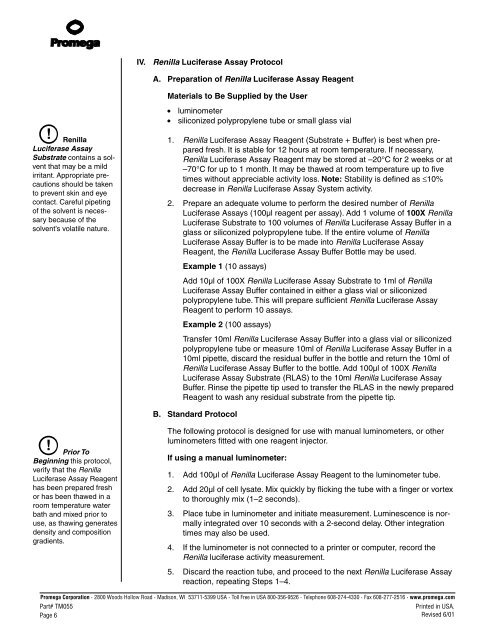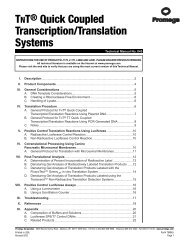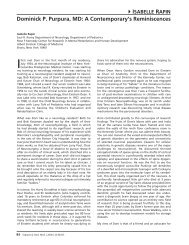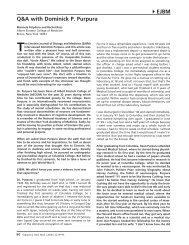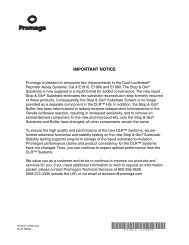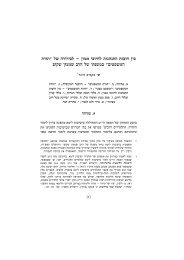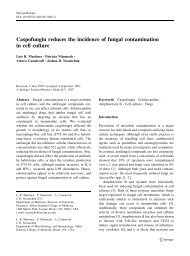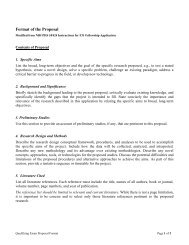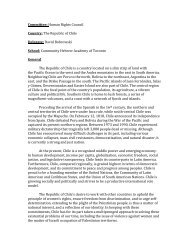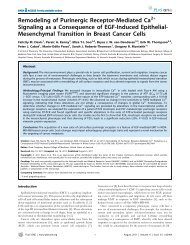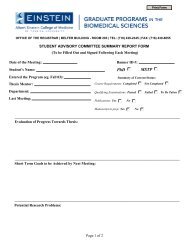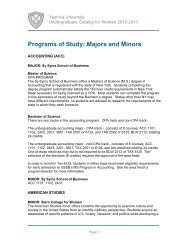Renilla Luciferase Assay System Technical Manual, TM055
Renilla Luciferase Assay System Technical Manual, TM055
Renilla Luciferase Assay System Technical Manual, TM055
You also want an ePaper? Increase the reach of your titles
YUMPU automatically turns print PDFs into web optimized ePapers that Google loves.
IV.<br />
<strong>Renilla</strong> <strong>Luciferase</strong> <strong>Assay</strong> Protocol<br />
A. Preparation of <strong>Renilla</strong> <strong>Luciferase</strong> <strong>Assay</strong> Reagent<br />
!<br />
<strong>Renilla</strong><br />
<strong>Luciferase</strong> <strong>Assay</strong><br />
Substrate contains a solvent<br />
that may be a mild<br />
irritant. Appropriate precautions<br />
should be taken<br />
to prevent skin and eye<br />
contact. Careful pipeting<br />
of the solvent is necessary<br />
because of the<br />
solvent’s volatile nature.<br />
Materials to Be Supplied by the User<br />
• luminometer<br />
• siliconized polypropylene tube or small glass vial<br />
1. <strong>Renilla</strong> <strong>Luciferase</strong> <strong>Assay</strong> Reagent (Substrate + Buffer) is best when prepared<br />
fresh. It is stable for 12 hours at room temperature. If necessary,<br />
<strong>Renilla</strong> <strong>Luciferase</strong> <strong>Assay</strong> Reagent may be stored at –20°C for 2 weeks or at<br />
–70°C for up to 1 month. It may be thawed at room temperature up to five<br />
times without appreciable activity loss. Note: Stability is defined as ≤10%<br />
decrease in <strong>Renilla</strong> <strong>Luciferase</strong> <strong>Assay</strong> <strong>System</strong> activity.<br />
2. Prepare an adequate volume to perform the desired number of <strong>Renilla</strong><br />
<strong>Luciferase</strong> <strong>Assay</strong>s (100µl reagent per assay). Add 1 volume of 100X <strong>Renilla</strong><br />
<strong>Luciferase</strong> Substrate to 100 volumes of <strong>Renilla</strong> <strong>Luciferase</strong> <strong>Assay</strong> Buffer in a<br />
glass or siliconized polypropylene tube. If the entire volume of <strong>Renilla</strong><br />
<strong>Luciferase</strong> <strong>Assay</strong> Buffer is to be made into <strong>Renilla</strong> <strong>Luciferase</strong> <strong>Assay</strong><br />
Reagent, the <strong>Renilla</strong> <strong>Luciferase</strong> <strong>Assay</strong> Buffer Bottle may be used.<br />
Example 1 (10 assays)<br />
Add 10µl of 100X <strong>Renilla</strong> <strong>Luciferase</strong> <strong>Assay</strong> Substrate to 1ml of <strong>Renilla</strong><br />
<strong>Luciferase</strong> <strong>Assay</strong> Buffer contained in either a glass vial or siliconized<br />
polypropylene tube. This will prepare sufficient <strong>Renilla</strong> <strong>Luciferase</strong> <strong>Assay</strong><br />
Reagent to perform 10 assays.<br />
Example 2 (100 assays)<br />
Transfer 10ml <strong>Renilla</strong> <strong>Luciferase</strong> <strong>Assay</strong> Buffer into a glass vial or siliconized<br />
polypropylene tube or measure 10ml of <strong>Renilla</strong> <strong>Luciferase</strong> <strong>Assay</strong> Buffer in a<br />
10ml pipette, discard the residual buffer in the bottle and return the 10ml of<br />
<strong>Renilla</strong> <strong>Luciferase</strong> <strong>Assay</strong> Buffer to the bottle. Add 100µl of 100X <strong>Renilla</strong><br />
<strong>Luciferase</strong> <strong>Assay</strong> Substrate (RLAS) to the 10ml <strong>Renilla</strong> <strong>Luciferase</strong> <strong>Assay</strong><br />
Buffer. Rinse the pipette tip used to transfer the RLAS in the newly prepared<br />
Reagent to wash any residual substrate from the pipette tip.<br />
B. Standard Protocol<br />
!<br />
Prior To<br />
Beginning this protocol,<br />
verify that the <strong>Renilla</strong><br />
<strong>Luciferase</strong> <strong>Assay</strong> Reagent<br />
has been prepared fresh<br />
or has been thawed in a<br />
room temperature water<br />
bath and mixed prior to<br />
use, as thawing generates<br />
density and composition<br />
gradients.<br />
The following protocol is designed for use with manual luminometers, or other<br />
luminometers fitted with one reagent injector.<br />
If using a manual luminometer:<br />
1. Add 100µl of <strong>Renilla</strong> <strong>Luciferase</strong> <strong>Assay</strong> Reagent to the luminometer tube.<br />
2. Add 20µl of cell lysate. Mix quickly by flicking the tube with a finger or vortex<br />
to thoroughly mix (1–2 seconds).<br />
3. Place tube in luminometer and initiate measurement. Luminescence is normally<br />
integrated over 10 seconds with a 2-second delay. Other integration<br />
times may also be used.<br />
4. If the luminometer is not connected to a printer or computer, record the<br />
<strong>Renilla</strong> luciferase activity measurement.<br />
5. Discard the reaction tube, and proceed to the next <strong>Renilla</strong> <strong>Luciferase</strong> <strong>Assay</strong><br />
reaction, repeating Steps 1–4.<br />
Promega Corporation · 2800 Woods Hollow Road · Madison, WI 53711-5399 USA · Toll Free in USA 800-356-9526 · Telephone 608-274-4330 · Fax 608-277-2516 · www.promega.com<br />
Part# <strong>TM055</strong><br />
Page 6<br />
Printed in USA.<br />
Revised 6/01


